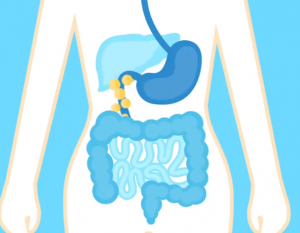Test Offers Accurate Way to Check for ‘Glutening’
 “For celiac patients, finding out whether they’ve been ‘glutened’ may soon get easier and more accurate thanks to the development of a test that can detect the presence of gluten immunogenic peptides (GIP) in urine,” says Jason Rehel for Allergic Living
“For celiac patients, finding out whether they’ve been ‘glutened’ may soon get easier and more accurate thanks to the development of a test that can detect the presence of gluten immunogenic peptides (GIP) in urine,” says Jason Rehel for Allergic Living
Watch the BioMedal Diagnostics’ video that explains how gluten immunogenic peptides (GIP) cause celiac disease, and how the new iVYLISA GIP gluten test enables monitoring adherence to a gluten free diet to avoid symptoms and other long-term consequences of inadvertent gluten exposure. Biomedal Diagnostics have developed a test whereby by the gluten immunogenic peptide can be detected in food, beverages and human fluids, helping patients monitor their diet and identify gluten contamination. This is the first product to assess compliance with a gluten-free diet with an eye to assuring celiac health!
“A new study, presented at the International Celiac Disease Symposium in Prague in early August, shows that researchers were able to detect GIPs in urine after consumption of as little as 50 milligrams of gluten, as early as four to six hours after gluten intake and up to one to two days afterwards. That means the new test can detect the smallest amount of gluten known to cause damage to celiac patients’ intestines.
“If you take a one-ounce slice of ‘regular’ white bread and break it into 7,030 pieces, each of these pieces contains 0.57 mg of gluten. You can think of this as just a crumb,” Tricia Thompson, the dietitian behind Gluten Free WatchDog, said in an interview for NFCA’s website.
As researchers moved ahead to trial the urine detection test in “real-life” situations with both celiac patients and a control group of non-celiac patients, they found that more than 50 percent of the celiac group had detectable levels of GIPs in their urine.
This, the study authors say, is proof that following a gluten-free diet does not guarantee against exposure, either voluntary or involuntary, and that a urine test like the one developed could be used to offer people a way to monitor true compliance with their gluten-free regimen.
Noting that the intestinal health of the vast majority (80 percent) of those without detectable GIPs was far better than those with detectable levels, researchers say there is a strong correlation between GIP levels in urine and damage to the gut.”
 See Questions and Answers with Researchers, ‘New Test Shows If Gluten Ingested’
See Questions and Answers with Researchers, ‘New Test Shows If Gluten Ingested’
Question 1
Q. A biological marker, or biomarker, is a measurable indicator of a biological process or disease state. For example, in celiac disease, commonly used biomarkers are the specific antibody blood tests like the IgA-tTG that enable doctors and researchers to see an active disease process. Is there potential for urine testing and GIPs to be used as a new biomarker for celiac disease?
A: Once the celiac disease patient has been diagnosed, the key reason for continuing to have symptoms is gluten intake. As soon as the patient is not exposed to any gluten, the disease is on the path to being controlled. When gluten is ingested, peptides are produced that trigger the immunological toxic response in celiac disease patients. The GIPs could only be detected in urine when gluten has been ingested and absorbed by the patients, so we would consider GIPs in urine as a biomarker given the toxic effect of gluten for patients. The correlation of GIPs in urine with mucosal damage was found to be much higher than other biomarkers currently available and in use.
Question 2
Q. How is this method of testing for gluten different than current monitoring techniques such as blood tests and the small intestinal biopsy?
A: This tool allows a person to directly detect actual ingestion of gluten, as opposed to the consequences of gluten ingestion such as inflammation, detected through small intestinal biopsy. For example, in some cases inflammation could also be due to other causes such as infections and enzyme deficiencies so it’s important to measure the gluten itself.
Question 3
Q. How do you see this technique being used in the future? What do you consider to be the greatest benefit that this method could provide?
A: Our future aim is that this technique could help to serve the gluten-free population the same way that the scale can help to control obesity or glucose strips and a glucose meter helps to control diabetes. It could be used as the way a patient with celiac disease could check to see if their gluten-free diet is truly gluten-free. In addition to assessing gluten-free diet adherence, the test can also be used in pharmaceutical research because gluten exposure should be demonstrated to confirm the diagnosis (for example, of refractory celiac disease) or to show the efficacy of a drug.
Question 4
Q. What is the smallest amount of gluten ingested that this test would be able to detect?
A: It will probably depend on the individual and the accompanying food that contains gluten. To date, we have demonstrated that as low as 50 mg could be detected in urine samples of several individuals on a gluten-free diet.
Question 5
Q. How user-friendly would a test like this be? How do you envision that a patient might have access to it – would it be from a medical provider, pharmacist, over the counter (OTC)?
A: The urine test will soon be available for research laboratories because it requires specialized equipment and supplies. In any case, the stool test for detection of GIPs is already available in some countries as a regular clinical lab test that can be ordered by any doctor or even directly by the patient. We are collaborating with clinical lab companies to make the analytical services with our gluten stool test method available in the U.S.
We have also evaluated the possibility to make the gluten stool test accessible through the medical provider and/or pharmacist because it will be convenient for people with celiac disease, the testing method is simple and the clinical data will be easily available. For example, there are already colon disease pre-screening tests available in the market as OTC products. We also expect to have the urine home test available in few years.
For more information about what gluten immunogenic peptides (GIPs) are and how they play a role in celiac disease, watch the video below from the Spanish biotechnology company, Biomedal Life Science. Biomedal is credited with the development of numerous techniques and products to test gluten content in food and beverages, with many customers in the U.S. and also one product already certified by international organizations, The Association of Analytical Communities (AOAC) and Food Analysis Performance Assessment Scheme (FAPAS). The tests for detection of gluten in urine and stool are currently all in development or in the clinical trial phases. They are not presently available for clinical applications in the U.S. and are therefore not available for patient use in the U.S. NFCA will share additional details on the other gluten identification devices that Biomedal is developing as more information becomes available.
Original Study: Presence of gluten peptides in urine reveals diet transgressions: Correlations with mucosal damage









